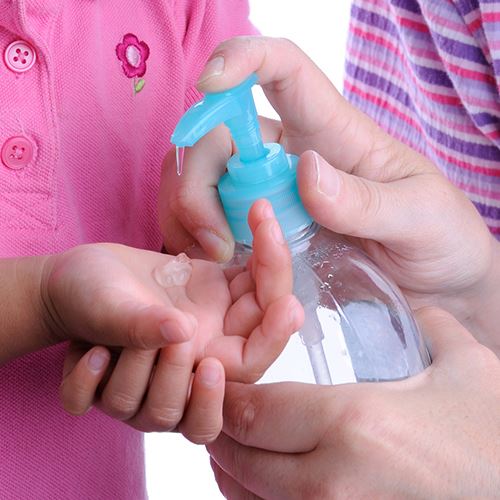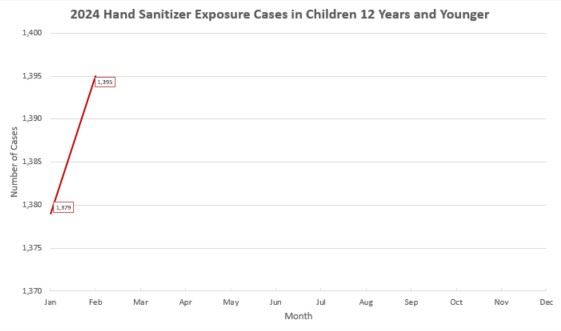- Home
- Prevention
- Hand Sanitizer
|
Many hand sanitizers come in brightly colored bottles, can be laced with glitter, and smell like food or candy. This type of packaging makes them very tempting to young children. While a child who licks a tiny amount of hand sanitizer off of his or her hands is unlikely to become sick, a child ingesting any more than a taste of hand sanitizer could be at risk for alcohol poisoning.The amount of alcohol in hand sanitizer ranges from 40% to 95%. Most hand sanitizer products contain over 60% ethyl alcohol, a stronger alcohol concentration than most hard liquors. By comparison, wine and beer contain about 10-15% and 5-10% alcohol, respectively. Even a small amount of alcohol can cause alcohol poisoning in children. Alcohol poisoning can cause confusion, vomiting and drowsiness, and in severe cases, respiratory arrest and death.As of February 29, 2024, Poison Centers have managed 2,774 hand sanitizer exposure cases in patients that were 0-12 years of age.
| PREVENTION
RESOURCESFor more information on preventing exposures to hand sanitizers, read this factsheet on hand sanitizers from the Upstate New York Poison Center. |
Important notes about Poison Center dataAmerica's Poison Centers maintains the National Poison Data System (NPDS), the national database of information logged by the country’s Regional Poison Centers serving all 50 United States, Puerto Rico, the District of Columbia, and territories. Case records in this database are from self-reported calls: they reflect only information provided when the public or healthcare professionals report an actual or potential exposure to a substance, request information, or request educational materials. As such:The term “exposure” means someone has had contact with the substance in some way; for example, ingested, inhaled, or absorbed a substance by the skin or eyes, etc. Exposures do not necessarily represent poisonings or overdoses. |
/APC%20logo_2C%20with%20tagline.jpg)

